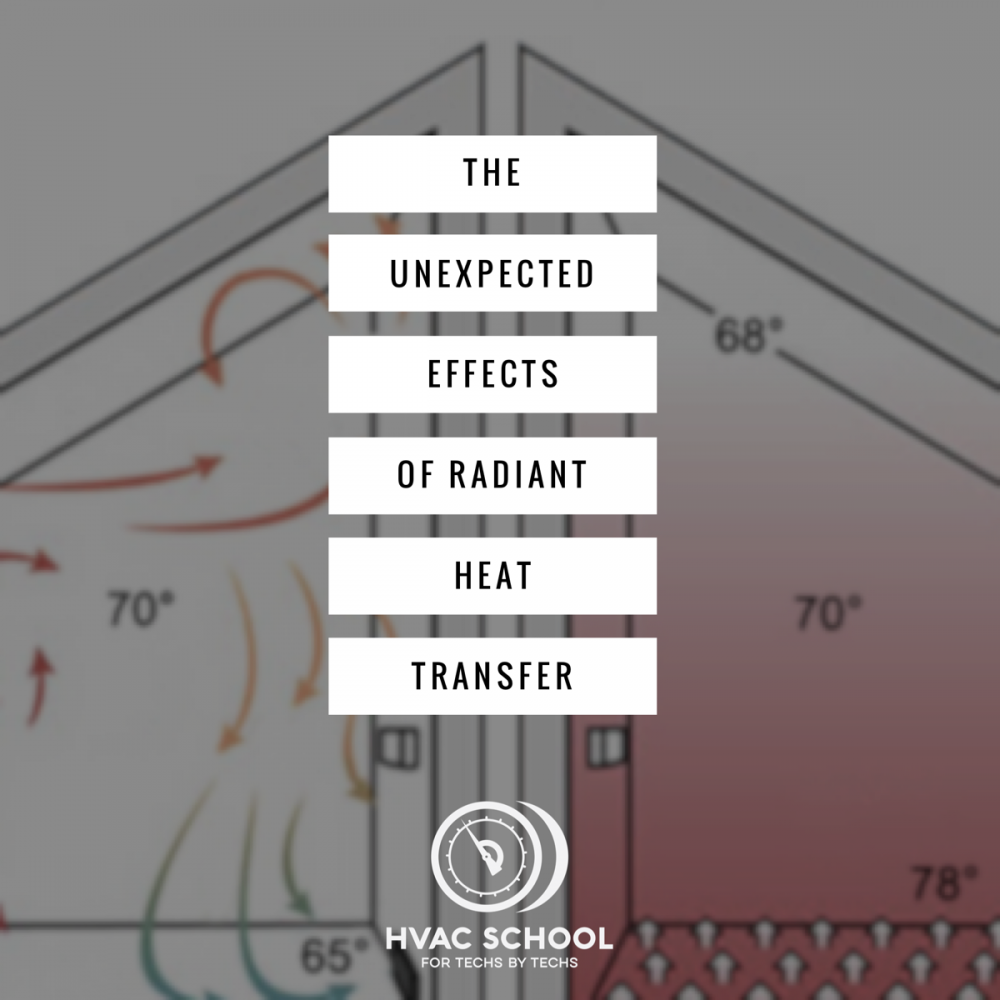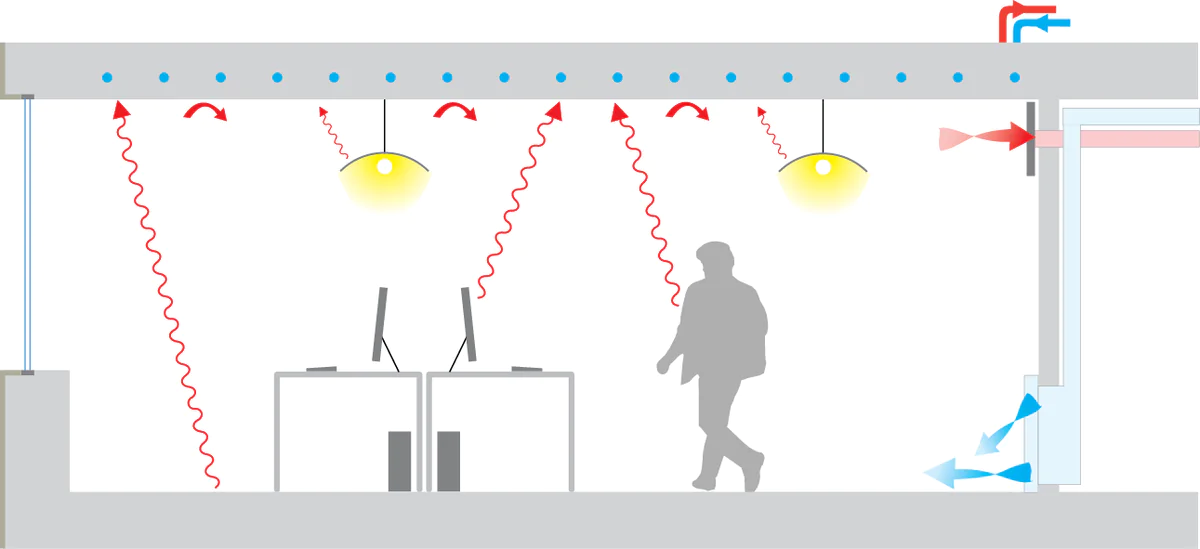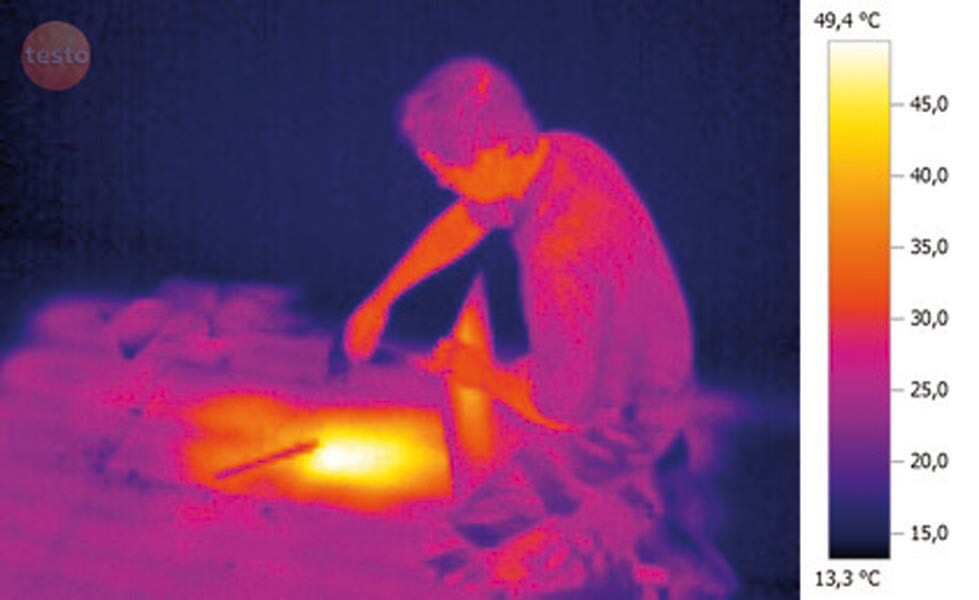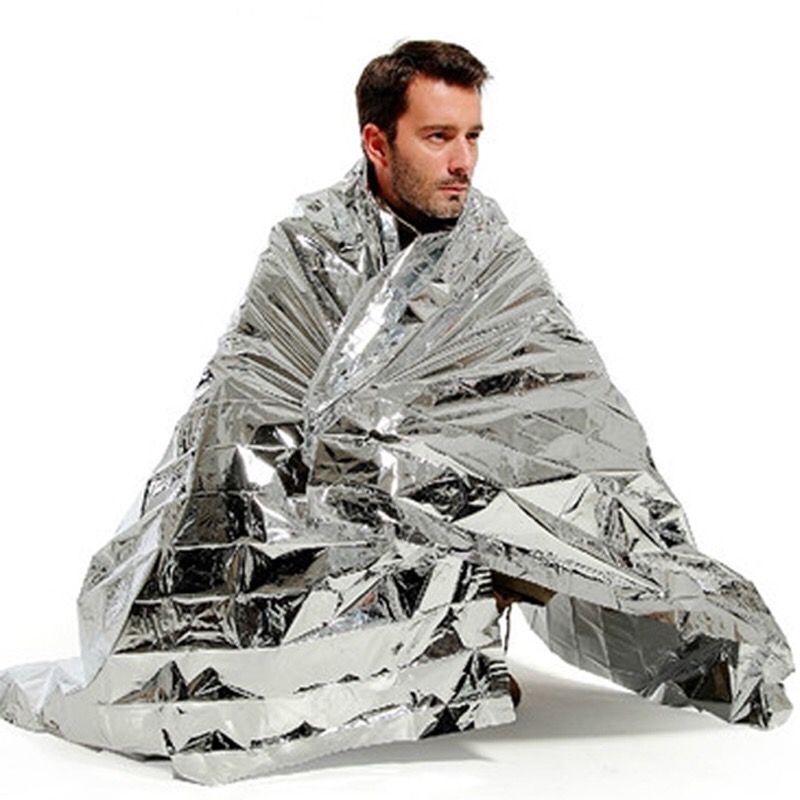Get Tech Tips
Subscribe to free tech tips.
The Sneaky Effects of Radiant Heat Transfer

If you've ever sat close to a bonfire on a really cold night, you may have noticed that your face starts to get really warm. The minute you put your hands up and shield your face from the light of the flame, your face cools off almost immediately.
That happens because the flame is heating your face through THERMAL RADIATION, not by heating the air in between.
Many have taught that radiant heating (thermal radiation) happens when one body of matter is exposed to a light source such as the sun or a fire. While this is partly true, the VISIBLE light spectrum is only a small part of the story.
Take a look at this photo above taken using a Testo thermal imaging camera. This image could have been taken in complete darkness, yet it displays the thermal radiation.
That is because EVERYTHING that is above absolute zero puts off thermal radiation in the form of electromagnetic radiation; everything in our world is above absolute zero (-460°F), so everything emits radiant heat.
In the case of the human body, we are putting off radiant heat to everything around us and picking up radiant heat from all of those same objects. The net thermal (heat) effect on our body is based on whether the average surface temperatures we are exposed to are higher or lower than our body temperature.
Thermal radiation can be “reflected” in the same way as visible light. This is why these weird “space blankets” can keep a person warm by simply reflecting back their own thermal radiation.
Radiant heat and human comfort
The real-world effect of thermal radiation on heat load and human comfort is huge.
You can have a room with an air temperature of a comfortable 72° that can still feel hot or cold to an occupant based on the temperature of the surfaces around them. In fact, studies have shown that the wall surface temperature has the same effect on comfort as room air temperature.
A 1°F change in wall surface temperature is nearly equal to a 1°F change in air temperature as it relates to overall thermal gains/losses to the human body.

That example shows why radiant cooling and heating and products like radiant barriers make such a big difference. It also explains why we see differences in the temperatures of black and silver flex ducts; in a completely dark attic, the black duct will usually be so much warmer than silver ducts in the same light and temperature range.
It also makes a difference in cases of thermostat and sensor placement. Remember, it isn't just a matter of keeping the thermostat or sensor out of the sun. You must also consider what objects the sensor is “exposed” to through line of site thermal radiation.
—Bryan
P.S. – If you'd like to read more about the technologies and history of radiant heating/cooling in our industry, check out this article about radiant heating and cooling of the past and present.













Comments
yes mhmm i see interesting, i get it!!!!
yes mhmm i see interesting, i get it!!!!
To leave a comment, you need to log in.
Log In